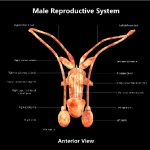Testicular cancer is the cancer in the testicles, the male reproductive organ that makes hormones and sperm. To learn more about testicular cancer, read here.
How is testicular cancer staged?
Staging standardizes the process of describing how much the cancer has spread in the body and this is an important step to determine the best course of action for the disease. Most cancers that have tumours are staged using a staging system called TNM system. For staging testicular cancer, this system is slightly modified to account for level of tumour markers. Read more about testicular cancer staging here.
Stage II of testicular cancer:
The cancer at this stage is identified anywhere in the testicles and has spread to the nearby lymph nodes. Testicular cancer spreads into the spermatic cord and scrotum. When the patient’s blood sample is tested for tumour marker levels, it will be observed to be slightly higher than normal in stage II of testicular cancer.
Treatment of stage II testicular cancer:
Stage II of testicular cancer is broadly categorized into three stages. The treatment is based on whether the testicular cancer is seminoma or nonseminoma. The treatment to be given is depends on many other factors like the medical history, tolerance of the patient and sub stage of testicular cancer. Following are the treatment stage II testicular cancer substage wise:
Stage IIA:
In this stage, the cancer is present in the testicle and has spread to one to five nearby lymph nodes, with the tumour size being lesser than 2 cm. The testicular cancer might have spread into the spermatic cord or scrotum as well.
For seminomas, radical inguinal orchiectomy followed by radiation therapy to the retroperitoneal lymph nodes is the recommended course of treatment. Chemotherapy may also given in a few cases with 4 cycles of EP or 3 cycles of BEP.
For nonseminomas, Retroperitoneal lymph node dissection (RPLND) and chemotherapy are the most recommended treatments.
Stage IIB:
In this stage, the cancer invaded the lymph nodes from the testicles and might have spread to the scrotum also. In stage IIB of testicular cancer, the cancer has spread to not more than five lymph nodes and the tumours are not larger than 5 cm.
For seminomas, resection of tumours is done by surgery and the treatment to eliminate cancer from the remaining parts of the body could be chemotherapy or radiotherapy. If chemotherapy is given, 4 cycles of EP or 3 cycles of BEP is the usual practice. And for radiotherapy, radiation with slightly higher dose than stage I is given.
Again, for nonseminomas, retroperitoneal lymph node dissection (RPLND) and chemotherapy are the most successful treatments.
Stage IIC:
The cancer at this stage has spread to more than five lymph nodes and the tumour size is larger than 5 cm.
For seminomas and nonseminomas, radiation is not commonly used for treating stage IIC of testicular cancer. Post surgical procedures, chemotherapy with 4 cycles of EP or, 3 or 4 cycles of BEP is given.
Survival rate:
The 5 year survival rate is the number of patients out of every 100 diagnosed, who have survived 5 years after being diagnosed and is usually represented in percentage.
Stage II of testicular cancer is a very curable form of cancer. 95 out of every 100 men treated with testicular cancer in stage II have survived, that is, it has a survival rate of 95%. The survival rate of the cancer completely depends on the type of treatment the patients have been given along with a lot of other factors. Read about the treatment options of testicular cancer here




